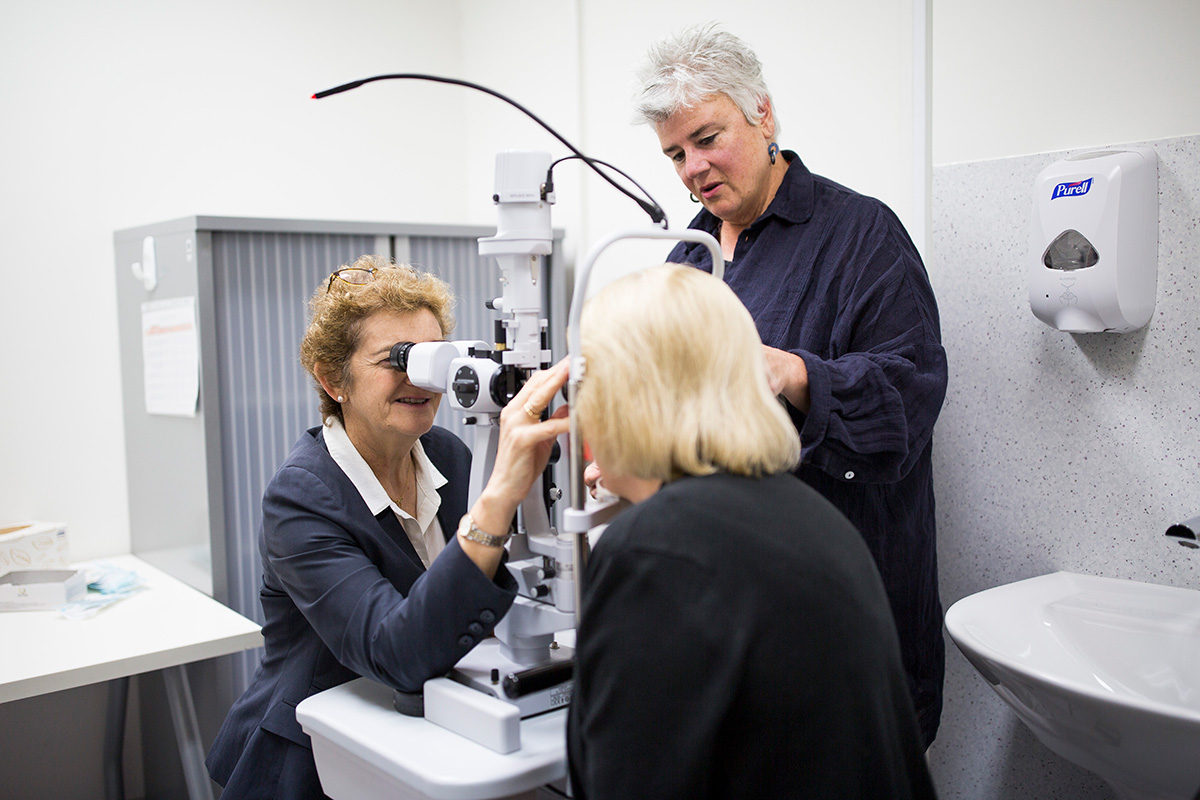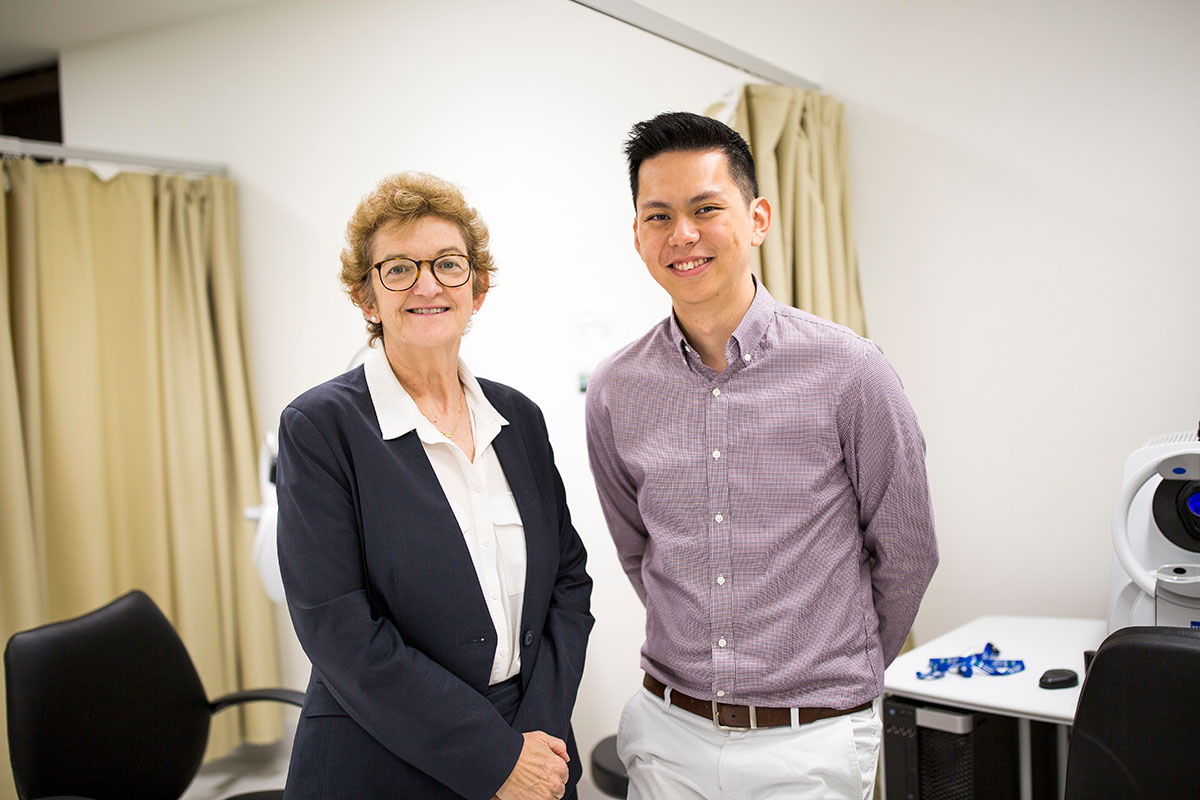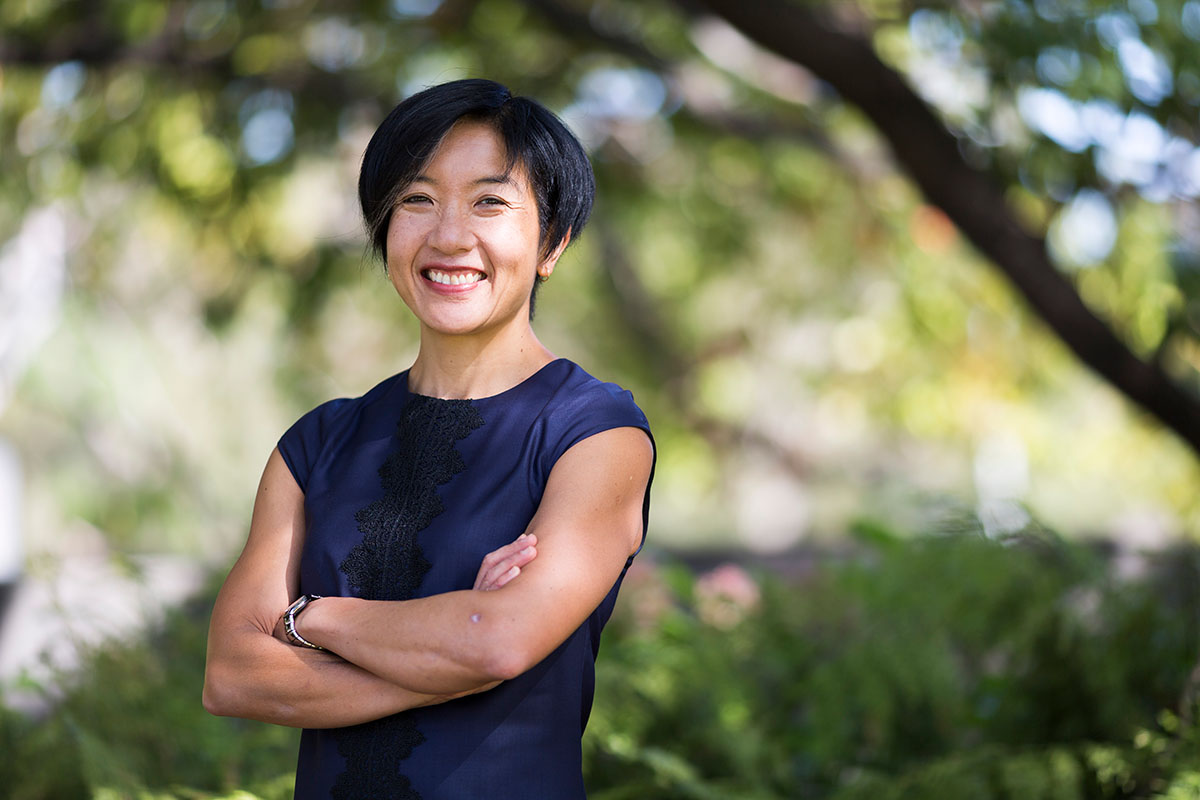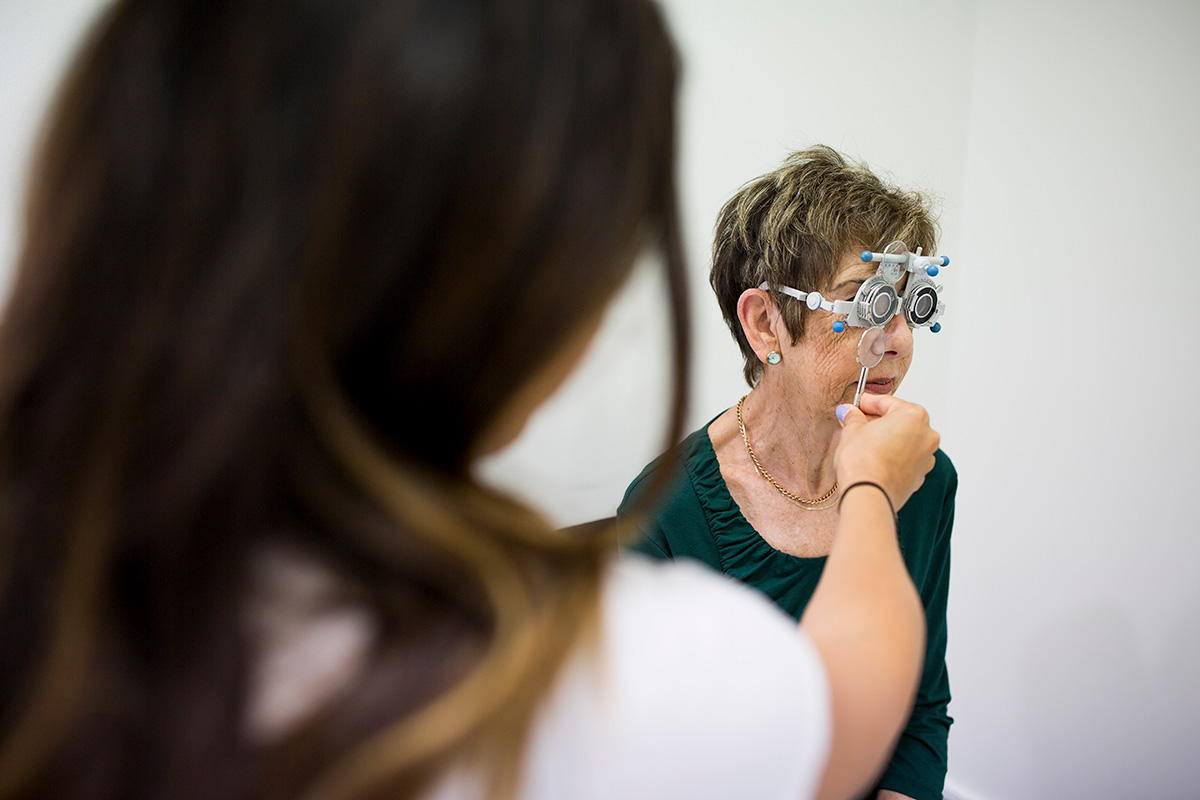This website uses cookies so that we can provide you with the best user experience possible. Cookie information is stored in your browser and performs functions such as recognising you when you return to our website and helping our team to understand which sections of the website you find most interesting and useful.
News
25 years of macular research at CERA
CERA’s Macular Research Unit is celebrating 25 years of research, clinical trials and achievements.
A quarter of a century ago people diagnosed with age-related macular degeneration (AMD) did not have much hope their vision could be saved.
Treatments for the condition were virtually non-existent, and the outcome for most patients would be either a sudden loss of vision, or a more a gradual, irreversible loss of sight.
It was in these circumstances that CERA’s Deputy Director and Head of Macular Research Professor Robyn Guymer AM established CERA’s Macular Research Unit (MRU).
In the 25 years that have followed, the team has counted many significant achievements towards both understanding and treating AMD.
Though there is still lots of work to be done, the collective efforts of everyone who has ever been a part of the MRU have helped make the prognosis nowhere near as bleak as it once was.

Early days
After completing a fellowship at Moorfields Eye Hospital in London, Professor Guymer came home to Melbourne to establish the Macular Research Unit at CERA in 1997.
At the time very little was understood about the condition.
“We had only just realised macular degeneration was an inherited disease, but we did not yet know of any genes associated with it,” says Professor Guymer.
“And so, the research approach at the time was to find diseases that looked like AMD, try and find the genes associated with those diseases, and hope that they had a connection with AMD.”
Finding these genes was the first aim.
“If you find the gene, you find the pathway, and then you can look for treatments,” says Professor Guymer.
“To do that, we needed to find families with AMD as well as other families with rare inherited retinal diseases so that we could study them one by one.”
With an initial grant of $10,000 for a portable retinal camera, Professor Guymer and her only other unit member, research nurse Melinda Cain – who is still with the unit today – spent several years travelling through regional Victoria and Tasmania taking blood samples and photos of the eyes of families with suspected AMD.
Remarkably, they found a family of 20 siblings many of whom had a rare, devastating, dominantly inherited retinal condition similar to AMD called Malattia Leventinese.
“Because of this large family, as well as others, we were able to help our collaborators narrow the region of interest on the chromosome carrying the gene so that they could find the gene that caused Malattia Leventinese,” says Professor Guymer.
Their work created leads towards the mechanisms that cause retinal diseases and helped establish the MRU as a group that could contribute well-classified clinical cases for ongoing genetic analysis.
Twenty-five years later, the the unit is still contributing to this ongoing work as part of large genetic consortia.

Improved imaging
Alongside an increasing understanding of the causes of AMD, the ability to take an image of the retina has also come a long way.
In the late 1990s, just as Professor Guymer was finishing up her time at Moorfield’s Eye Hospital in the UK, the first Optical Coherence Tomography (OCT) imaging devices were becoming clinically available.
OCT devices capture a cross-section image of the retina in a living eye, showing each of the retina’s distinctive layers.
Dr Zhichao Wu, as part of his PhD from 2012-2014, used this advanced imaging technique to follow people as they progressed through AMD.
“As part of his spectacular PhD, we announced to the world the specific changes you could see along the way that we felt were evidence of cell death, or the first sign of atrophy,” says Professor Guymer.
“We coined this term nascent geographic atrophy n(GA), geographic atrophy, or GA, as the term used for the late dry form of AMD where there are large areas of atrophy.”
Identifying and monitoring early signs of disease is an important part of the efforts to intervene in AMD before there is significant loss of retinal cells.
Dr Wu continues on at CERA, now leading his own unit to further work on early markers of disease progression in both AMD and glaucoma.
Vision in the dark
Also important is understanding what facets of visual function are affected early in AMD.
This is challenging during the earliest stages of AMD – the traditional measure of visual function is visual acuity and it is generally normal.
But what is known, and is a common complaint among patients, is that seeing in the dark becomes difficult.
Measuring a person’s ability see in the dark has been an interest of Associate Professor Chi Luu, who initially spent time in MRU working on one of Professor Guymer’s interventional studies in the late 1990’s whilst a PhD student, then later returned to join the unit to work on the bionic eye project in 2008.
In AMD, however, he has worked on improving the ability of researchers to be able to measure the ability of the eye to adapt to the dark.
Though a grant Professor Guymer received from the US-based Beckman Initiative in AMD (now Ryan initiative), A/Prof Luu helped design a new device capable of measuring night vision with the Australian company Medmont.
“The DACP field machine allowed many areas of the retina to be tested in one sitting, which was not possible with the device used at the time, allowing a much better idea of the regional health of the macula to be assessed,” says Professor Guymer.
“We are internationally known as a leader in understanding how to measure and interpret the eyes’ ability to adjust and see in the dark, which is a very sensitive way of picking up early defects in AMD.”
The DACP machine is now in use by many research groups worldwide.

Clinical trials
Associate Professor Lyndell Lim, who is now head of the Clinical Trials Research Centre (CTRC) at CERA, was the macular team’s first retinal research fellow in 2003.
She performed the first intravitreal injection for AMD at the Royal Victorian Eye and Ear Hospital, trialling a medication designed to treat the late wet stage of AMD.
“Up until then people had not injected an eye on an ongoing, multi-year basis, so no-one knew how the eye would cope,” says Professor Guymer.
CERA has since been invited to take part in many of the major international clinical trials for wet AMD, and now dry AMD, treatments, and this clinical trial activity has become too great for one set of researchers.
To support the growing number of clinical trials, A/Prof Lim went on to establish CERA’s clinical trial research unit to manage not only the large industry trials for AMD, but many of the other diseases being investigated by CERA.

Reticular pseudodrusen
Between 2012 and 2018 Professor Guymer and her team designed and led the LEAD study.
It was the first randomised clinical trial investigating the possibility that a nanosecond laser, developed by the Australian laser company Ellex (now NovaEye) may slow the progression of intermediate stage AMD.
“Whilst we continue pursuing subthreshold short pulse laser as a possible intervention, the LEAD trial confirmed in our minds the need to concentrate on people with unusual deposits called reticular pseudodrusen, as these people had a sub optimal response to the laser compared to those without RPD,” says Professor Guymer.
“Our interest now is to try to find a genetic association with that particular phenotype because, I think, this will lead us to better understand the mechanisms underlying the development of reticular pseudodrusen and why some people have more profound vision loss in AMD.”
Professor Guymer and her team now lead, with support from the National Health and Medical Research Council, an international consortium further investigating the impact of reticular pseudodrusen.
Tax Appeal 2022
Much has been achieved in the last 25 years in macular research, but there is still plenty to do for the next quarter decade.
To help our researchers make breakthroughs that will transform our understanding and treatment of AMD, you can make a donation online or call 1300 737 757.

